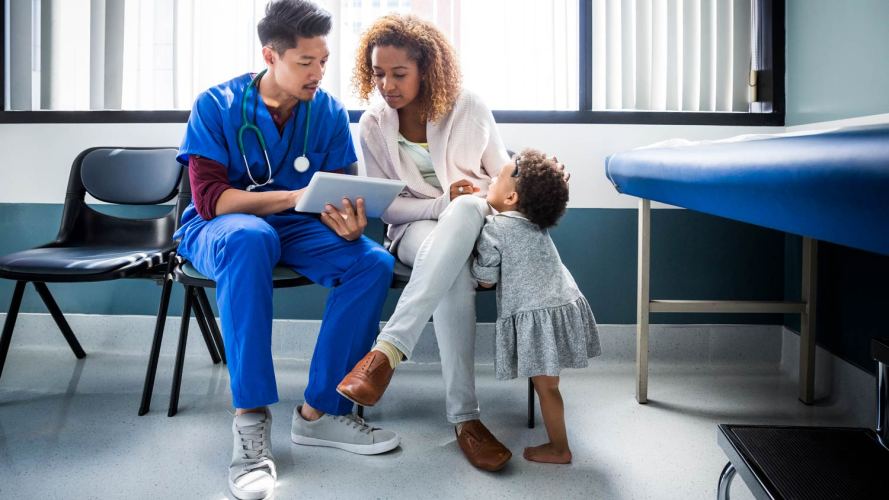Erosion of Trust Undermines the Public’s Reliance on Health Departments



How government agencies can harness public health information to enhance health and human services and build trust.
The majority of Americans agree public health agencies and public health information are vital to the health of the nation, yet only 41% trust local and state health departments. At the same time, people are increasingly taking accountability for their own health, though often doing so through unreliable sources and non-medical professionals.
This erosion of trust is quickly becoming a thorn in the side of community well-being. For public sector health, reliable information can mean the difference between life and death, which means building trust needs to be a top priority. That’s why effective use of technology to capture public health information and data can help health agencies foster public trust and deliver a more comprehensive, holistic constituent experience.
Let’s see how this might look across three areas:
- Improved access to health services
- Proactive management of health data and public health information
- Collaboration across the care continuum
Improved access to health services
Today’s consumer has come to expect personalized, friction-free experiences. People prefer to interact where they want, when they want, how they want, and on the most convenient channels. Eighty-seven percent of citizens believe a digital government experience would increase their degree of trust.
Technological solutions can help government organizations provide this kind of service. Healthcare technology platforms integrate critical data across an organization in order to streamline everything from electronic health records (EHRs) to stakeholder engagement. This type of platform helps providers and payers deliver the type of care today’s consumer has come to expect by giving them things like:
- Easy access to health information like personal records and test results, from anywhere
- Timely notifications for upcoming appointments and procedures
- Digital self-service options enabling prescription refills and insurance reimbursement
An always-up contact center, for example, with multiple modes of communication and automated tasks, can help agencies scale their offerings for patients, veterans, beneficiaries, and residents alike. A CRM has the power to improve employee workflows and customer experiences by reducing redundancies and creating seamless links between different care teams, be they behavioral, social, or medical.
Proactive management of health data and public health information
COVID-19 quickly catapulted into a worldwide disaster; mass chaos ensued as everyone was scrambling to react. It became obvious how closely coalesced the health of the individual and the health of the community is. Fortunately — and especially in the fight against the coronavirus — people generally want to be part of a solution. Consider this:
- 72% of people believe the activities of public health agencies are extremely or very important to the health of the nation
- 71% understand the role their personal information plays in the public health data management
- 67% of health consumers are comfortable sharing personal health information for public health purposes that would benefit the community
The ability to view this data in one place — and the willingness of the public to provide it — presents an enormous opportunity. It allows the public sector to act in a more informed, prompt, and effective manner. Ninety percent of customers say how an organization acts during a crisis is indicative of their trustworthiness. Proactive engagement can build trust within communities and ideally prevent escalation into another full-scale emergency.
Establishing a centralized “command center” would enable public health officials to collect, organize, and view vital data in aggregate so they could better predict, identify, and manage health trends. Beyond disease management, having a single source of truth can also aid in other public health issues like climate change and social services.
Collaboration across the care continuum
Social determinants affect up to 80% of health outcomes. Streamlining care allows constituents to feel seen, heard, and cared for, which helps them to better trust and lean on their public healthcare institutions.
Seventy-one percent of health consumers want care that addresses their social, economic, and environmental factors. Integration of care that addresses both clinical and nonclinical health factors allows public health institutions to shift from solving singular issues occurring at a particular moment in time to addressing the bigger picture of how an ailment might fit into the larger context of a person’s life and how they ended up with it in the first place.
A collective, multifaceted solution tends to beat out something more siloed and one-dimensional. This was no more evident than in the government’s ability to fast-track the development of a SARS-CoV-2 vaccine in less than a year by working together with private enterprises.
The private sector has access to funding and capital to a tune often unavailable to public sector institutions. Partnering with private companies affords public health officials the ability to coordinate services and wide-scale planning efforts, reducing inequity and improving the health of the overall population.
In order for public institutions to make the most efficient use of their limited resources, they need to remove barriers — initiate strong public-private partnerships, engage in information-sharing, and establish more open data-use agreements. Working to both automate and unify resources across a wide range of organizations will enable collaborative solutions that:
- Connect health and social care segments
- Allow for better price and information transparency
- Create more equitable access to care services
- Improve the experience of a burned-out workforce
Looking forward
The last few years have brought accelerated adoption of virtual care and spurred historic transformation — all against the backdrop of waning consumer trust. As the community moves on from this responsive phase of the pandemic, it’s important that we set our sights on preparing for the next crisis and changing government experiences for the better.
Bottom line: treat people as they want to be treated, meet them where they are — whether that’s via a portal or a good old-fashioned phone call. Health officials and organizations need omni-channel options to demonstrate capability, empathy, and foresight. They need joint, cross-disciplinary teams that bolster the supply chain and a more resilient data platform to monitor public health information for early warning indicators in order to stop the next predicament before it becomes a concern.
Promote community health and well-being from anywhere
Learn more about how employing digital solutions can help health authorities achieve these goals by providing insight, innovation, and integration across industries.




























